The Snake algorithm an image processing technique used to determine the contour of an object, the snake is nothing but a vector of (X,Y) points with some constraints, its final goal is to surround the object and describe its shape (contour) and then to track or represent the object by its shape.
The algorithm has two kinds of energies, internal and external.
Internal energy (the snake energy) (IE) is a user defined energy which acts on the snake (internally) to impose constraints on smoothness of the snake, without such a force, the snake shape will end up with the exact shape of the object, this is not desirable, because the exact shape of an object is very difficult to be obtained, due to light conditions, quality of image, noise, etc.
The external energy (EE) arises from the data (the image intensities), and it is nothing but the absolute difference of the intensities in the x and y directions (the intensity gradient) multiplied by -1, to be summed with internal energy, because the total energy must be minimized. so the total energy for all of the snake point should be minimized, Ideally, this come true when there are edges, because the gradient on the edge or (EE) is maximized, and since it is multiplied by -1, the total energy of the snake around the nearest object is minimized, and thus the algorithm converges to a solution, which is hopefully the true contour of the studied object.
because this algorithm relies on EE which is not only high on edges but also high on noisy points, sometimes the snake algorithm does not converge to an optimal solution, that why it is an approximate greedy algorithm.


